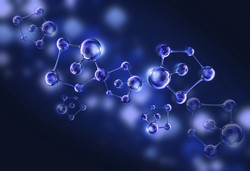Bioorthogonal chemistry to help uncover protein functions
Understanding protein structure, localisation, post-translation modifications and protein-macromolecule interactions is a necessary step to unravel the biology of the cell. To study and manipulate a macromolecule, involves incorporation of specific labels, or reporter molecules, by virtue of ligation reactions. With EU funding, the BIOCHEMLIG (Bio-orthogonal chemo-specific ligation) project searched for new biocompatible and chemo-specific ligation reactions. The project aimed to develop new ligation processes possessing high efficiency, large scope of application, high chemoselectivity and high rates. Ligation reactions are used to synthesise combinatorial libraries, label biomolecules and perform supramolecular synthesis. To fulfil the stringent criteria needed for in vivo applications, scientists sought physiological compatibility and bioorthogonality. The four-year project explored new reactions that can be applied to imaging, such as fluorination reactions, used to prepare 18F-labeled radiotracers for positron emission tomography. An 18F-C bond formation – where the radiotracer bonded with a carbon atom – was demonstrated for the first time using a mild and rapid palladium-based protocol. BIOCHEMLIG also focused on the development of new artificial metalloenzymes and dendrimer conjugation methodologies. Artificial metalloenzymes are composed of a catalytically competent organometallic moiety within a macromolecule. The project proposed the rational targeting of anticancer metallodrugs using presenter proteins, which could be exploited to improve their binding specificity to macromolecular targets. Scientists considered high-throughput screening for bond-forming reactions and templated ligation reactions, as well as development of a bio-chemo informatics platform for theoretical investigations. The project produced novel protein-labelling bioorthogonal reactions. Two resulting biosensor applications enable the rigorous analysis of biological samples. The results of BIOCHEMLIG are presented in 18 peer-review publications and 3 patents. BIOCHEMLIG will allow scientists to dissect cellular processes with molecular precision, speed up preparation of a library of bioconjugates and deliver innovative approaches to chemical biology.







